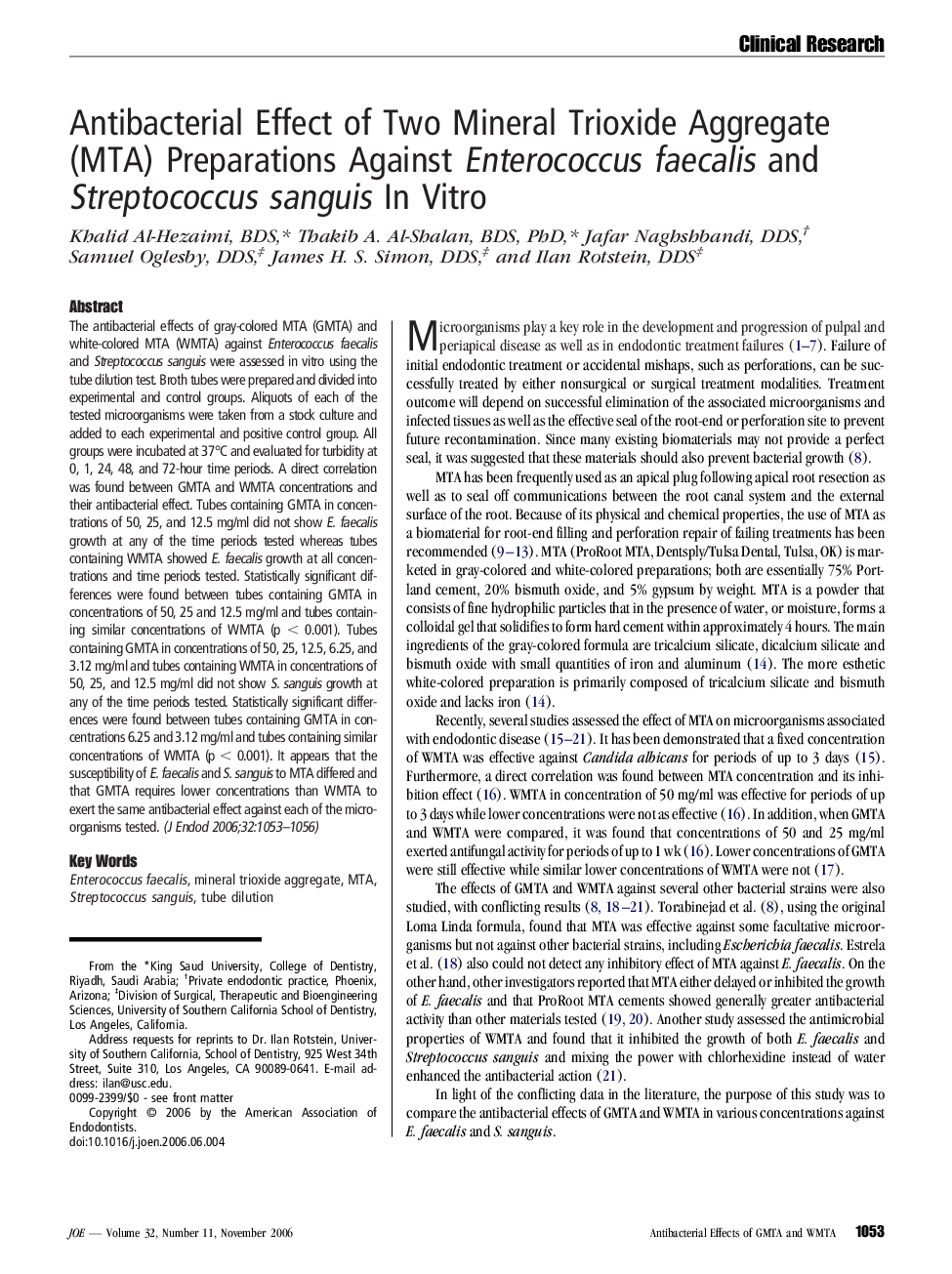| Article ID | Journal | Published Year | Pages | File Type |
|---|---|---|---|---|
| 3150066 | Journal of Endodontics | 2006 | 4 Pages |
The antibacterial effects of gray-colored MTA (GMTA) and white-colored MTA (WMTA) against Enterococcus faecalis and Streptococcus sanguis were assessed in vitro using the tube dilution test. Broth tubes were prepared and divided into experimental and control groups. Aliquots of each of the tested microorganisms were taken from a stock culture and added to each experimental and positive control group. All groups were incubated at 37°C and evaluated for turbidity at 0, 1, 24, 48, and 72-hour time periods. A direct correlation was found between GMTA and WMTA concentrations and their antibacterial effect. Tubes containing GMTA in concentrations of 50, 25, and 12.5 mg/ml did not show E. faecalis growth at any of the time periods tested whereas tubes containing WMTA showed E. faecalis growth at all concentrations and time periods tested. Statistically significant differences were found between tubes containing GMTA in concentrations of 50, 25 and 12.5 mg/ml and tubes containing similar concentrations of WMTA (p < 0.001). Tubes containing GMTA in concentrations of 50, 25, 12.5, 6.25, and 3.12 mg/ml and tubes containing WMTA in concentrations of 50, 25, and 12.5 mg/ml did not show S. sanguis growth at any of the time periods tested. Statistically significant differences were found between tubes containing GMTA in concentrations 6.25 and 3.12 mg/ml and tubes containing similar concentrations of WMTA (p < 0.001). It appears that the susceptibility of E. faecalis and S. sanguis to MTA differed and that GMTA requires lower concentrations than WMTA to exert the same antibacterial effect against each of the microorganisms tested.
